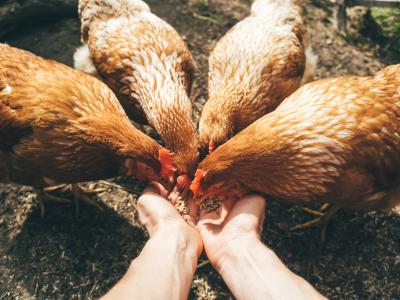Mar 14, 2003 (CIDRAP News) – State and federal officials this week confirmed the presence of low-pathogenic avian influenza (LPAI) at a large poultry farm in eastern Connecticut. Meanwhile, the highly pathogenic form of the disease has led to the killing of 1.4 million birds in the Netherlands in the past 2 weeks.
Ed Curlett of the US Department of Agriculture's Animal and Plant Health Inspection Service (APHIS) said yesterday that tests confirmed the outbreak of LPAI at Kofkoff Egg Farms in Connecticut, according to an Associated Press report. The farm, which has been quarantined since the outbreak was first suspected a week ago, has 4.7 million laying hens.
Also yesterday, Japan lifted a week-long ban on all imports of US poultry but will continue to bar poultry from Connecticut because of the outbreak, the AP reported.
A Connecticut agriculture official said tests from one chicken coop at the farm came back positive but results from other coops were negative, according to the report. No decisions had yet been made on how to eradicate the outbreak. State officials were said to have some hope that it would not be necessary to kill all the chickens on the farm.
In the Netherlands, an outbreak of highly pathogenic avian influenza (HPAI) surfaced 2 weeks ago. Agriculture Minister Cees Veerman reported Mar 12 that poultry flocks on 71 farms, totaling 1.4 million birds, had been killed as of Mar 11. "The flocks on 148 farms are to be culled with 2.2 million birds in all," Veerman stated in a letter to the Dutch Parliament.
Veerman said that as of Mar 12, HPAI had been confirmed on 31 farms and was suspected on 32 farms. Flocks on infected or suspect farms are killed within 24 hours, and flocks on other farms within 1 km of the affected farms are also being killed, he reported.
Dutch and European Commission authorities have banned the movement of live poultry or eggs within the Netherlands and from there to other countries. A similar quarantine is in effect in Belgium, where a possible outbreak of avian influenza was identified Mar 11 on a farm near the Dutch border, according to reports from the European Commission.
Veerman's report stated, "The infections found so far seem to have been the result of contacts between farms before the standstill order was in place. There seems to be no evidence of a second wave of infections, which is common with outbreaks of viral diseases."
The agriculture minister said there is a possibility that LPAI is also present in the Netherlands, and his department is spot-checking poultry farms that use "semi-intensive" systems. The surveillance is necessary not only because LPAI must be controlled, but also because low-pathogenic virus may mutate into the highly pathogenic form, his letter stated.
Both forms of avian influenza are caused by influenza type A virus. HPAI spreads rapidly in flocks and is often fatal; consequently it is considered a potential biological weapon. LPAI, which is more common in US flocks than the highly pathogenic form, usually does not cause severe disease.
In 1997 an outbreak of avian influenza A(H5N1) in Hong Kong led to a number of human cases, which resulted in 6 deaths. Last month, a Hong Kong man and his young son contracted the same virus, apparently from chickens, and the father died.
See also:
CIDRAP information: Highly Pathogenic Avian Influenza


















